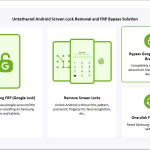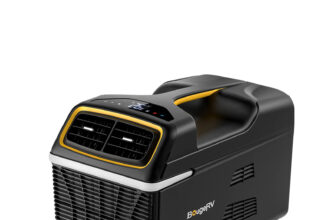Every property, whether rental or owned, needs a stable electrical cabling system to make it a place for a satisfying stay. These wiring networks are a fundamental requirement to ensure people can use different appliances, manage temperatures, and take on functions that will lead to smooth living conditions. However, these cabling systems can wear out with time and need fixing. Leaving faulty wiring unattended can be highly dangerous for people on a property and needs immediate rectification. But how does one handle them, especially for those who are not familiar with electrical works? The best solution is to seek the assistance of property management services that have qualified professionals to handle electrical repairs and maintenance.
Dealing with faulty electrical cables is challenging as you must find the safest and most efficient ways to handle them. You can either do it yourself or hire professionals to repair them. Irrespective of your chosen route, you must ensure that you can solve the issue in time before the situation worsens. Hence, we’ve made a simple tutorial with all the essential details you should know for handling faulty wiring.
Did You Know?
About 86.8% of repair work in properties results from electrical appliance issues.
A Guide to Dealing with Faulty Electrical Wiring
Step 1: Identify the Problem
The first step in dealing with faulty electrical wiring is to detect the problem. It can include flickering lights, outlets that don’t work, or a circuit breaker that keeps tripping. It is necessary to identify the specific issue so that you can take the appropriate steps to fix it. Early identification can also help you take preventive measures to stop the situation from worsening before you can fix it. It will allow you to take the needed steps more effectively to rectify the issue at its early stage.
Step 2: Turn off the Power
Before working on any electrical wiring, turning off the power to the affected area is necessary. You can do so by flipping the circuit breaker or turning off the main power switch. Make sure to test that the power is off before proceeding. It will help you conveniently proceed with checking out the wiring system without any potential electrocution risks. Hence, switching off the main power source as soon as you detect a potential wiring threat in any part of the property is necessary.
Step 3: Inspect the Wiring
Once the power is off, you can inspect the wiring to identify any upfront problems. Look for frayed wires, loose connections, or any signs of damage. If you are unsure what to look for or are uncomfortable inspecting the wiring yourself, it is best to call a licensed electrician. You can consult with local property managers to connect with reliable electricians who can help you. They’ll be able to determine the root cause of the fault and assist you with the steps needed to fix the issue.
Did You Know?
Between 2015-2019, electrical failures were the reason for 13% of home fires.
Step 4: Replace Damaged Wiring
If you have identified damaged wiring, you will need to replace it. Cut out the damaged areas of the wiring and remove the affected ends of the cables. Use wire nuts to connect the new wire to the existing wires. Make sure the connections are tight and secure. Once you have this in place, it will be convenient to re-establish a smooth-flowing electrical connection within the property. Replacing cables will ensure you have a fresh set of wiring flowing through your electrical system, making it safe and efficient for the long term.
Did You Know?
About 68% of home fires have taken place due to faulty wirings and cabling equipment.
Step 5: Tighten Loose Connections
You can tighten loose connections with a screwdriver if you have identified them. Once you’ve replaced the cables, ensure you have all the accessories to make a tight wiring system. Ensure all the plugs, bolts, or other wiring aids are secured well, or else it could increase the risk of faulty wiring again. Tightened connections will ensure that no wiring moves from its fixed location and causes any further damage to the entire electrical system.
Step 6: Replace Faulty Outlets or Switches
Once you identify faulty outlets or switches, you will need to replace them. Turn off the power to the affected area and remove the cover plate. Disconnect the wires from the old outlet or switch and connect them to the new one. Install the new outlet or switch and replace the cover plate.
Did You Know?
Electrical faults are the third leading cause of fires and casualties in properties in the US.
Step 7: Test the Wiring
Once you have made the necessary repairs, turn the power back on and test the wiring. Check that all outlets and switches are working as required and that there are no more flickering lights or tripped circuit breakers. Take your time with this process; there may be delays in noticing parts that still need work. Test every area, even parts that weren’t damaged, to ensure that the entire electrical system in the property functions as required.
Step 8: Call a Professional if Needed
If you are uncomfortable with any step of the process or cannot identify the problem yourself, it is best to call a licensed electrician. After all, electrical work is highly-risky if you’re uncertain of what to do. A professional will be able to guide you; they’ll be able to give you efficient solutions for the problems, allowing you to have a reliable wiring system. With their help, you’ll be able to solve faulty wiring issues and ensure efficient future care to prevent electrical faults within the property.
Endnote
Dealing with faulty electrical wiring can be challenging for property owners. However, due to the risks surrounding these issues, it is necessary to rectify the problem instantly before it worsens. By following these steps, one can simplify identifying and repairing faulty cabling systems. But at the same time, it is always beneficial to call in a professional if you have any doubts, as they can give you efficient solutions and prevent the system from failing in the future.















